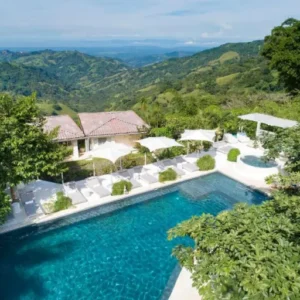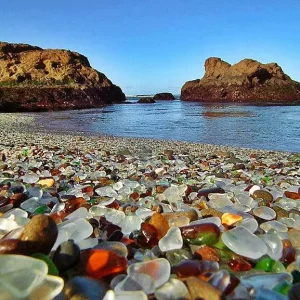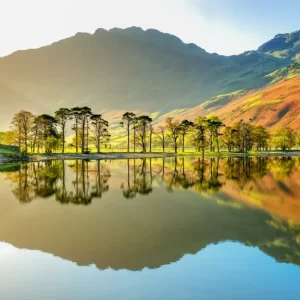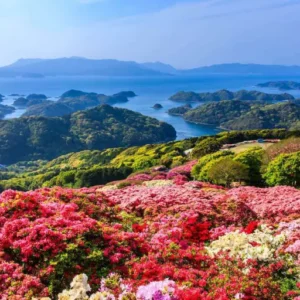Blessed with diverse vegetation and a mild climate, Ibaraki has become one of Japan’s most attractive destinations, drawing thousands of visitors every year. Located less than 100 km from Tokyo, this prefecture is famous as a year-round flower paradise, where travelers can immerse themselves in natural beauty while exploring unique cultural and historical sites.
During spring, not only can visitors lose themselves in a sea of cherry blossoms, but they can also enjoy exclusive experiences such as charter flights that allow them to explore Ibaraki’s landmarks from a whole new perspective.
1. Oarai Isosaki Shrine
Situated in Oarai town, Oarai Isosaki-jinja is an ancient shrine founded in 856, dedicated to the deity Onamu Chinomikoto, believed to bring peace and prosperity.
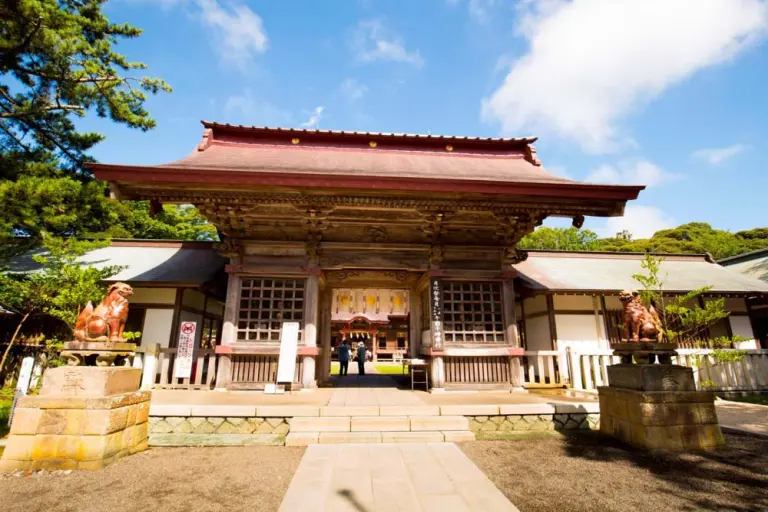
What sets this shrine apart is its ema (wooden wishing plaques). Instead of only carrying prayers, many are illustrated with characters from the anime series Girls und Panzer, which is set in Oarai. This gives international visitors a glimpse into Japan’s anime culture while adding a playful, modern touch to a sacred space.
>> Discover the fairytale village of Shirakawago – The hometown that inspired Doraemon
The shrine is also home to the striking Kamiiso no Torii, a sacred gate standing dramatically on the rocky Pacific coastline. Legend has it that the deity descended to earth at this very spot. At sunrise, when the gate glows crimson under the rising sun, the view is nothing short of breathtaking.
Whether at dawn, sunset, or under the moonlight, Oarai Isosaki Shrine offers visitors a spiritual and photogenic experience unlike any other.

2. Ushiku Daibutsu – The Giant Buddha
Next on the journey is the Ushiku Daibutsu, a massive bronze Buddha statue in Ushiku city. Standing at 120 meters tall, it holds the Guinness World Record as the tallest bronze Buddha in the world since 1995.
Inside the statue are five levels:
- 1st Floor: The World of Infinite Light
- 2nd Floor: The World of Gratitude
- 3rd Floor: The Lotus Sanctuary, housing about 3,400 golden Buddha statues
- 4th & 5th Floors: The Observation Deck, 85 meters above the ground, offering panoramic views of Kasumigaura Lake, Mt. Tsukuba, Mt. Fuji, and even Tokyo Skytree on clear days.
The grounds also include the Honganshogon Garden, bursting with seasonal flowers, and Kodobutsu Park, where families can enjoy playful monkey shows and other small animals.
Opening Hours:
- March – September: 9:30 – 17:00
- October – February: 9:30 – 16:30
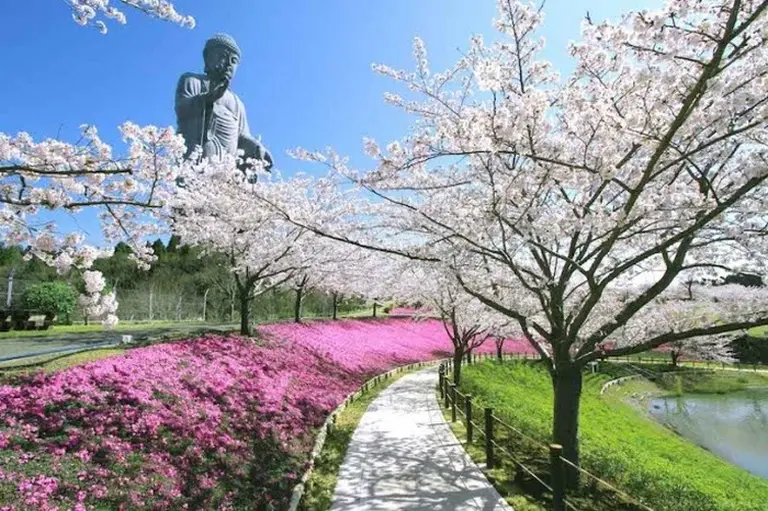
>> Tokyo’s enchanting winter romance beneath the snow
3. Ibaraki Flower Park
Located in Ishioka city, Ibaraki Flower Park is a paradise for rose lovers, home to 30,000 rose bushes representing 800 varieties.
The park blooms twice a year – in spring (mid-May to late June) and autumn (late September to early November). Visitors are greeted with rolling hills covered in vibrant roses, filling the air with fragrance.
Highlights include the Rose Dome, a glasshouse draped in climbing roses that also hosts seasonal photo exhibitions, and a large greenhouse cultivating orchids, begonias, hibiscus, and other exotic flowers.
For travelers visiting during the charter flight season (mid-February to late April), this is also the perfect time to see cherry blossoms. Kawazu cherry trees bloom in mid-February to March, followed by the iconic Yoshino cherry in late March to early April.

4. Kairakuen Garden
Mito city’s Kairakuen is one of Japan’s three most celebrated gardens. Built in 1842 by Nariaki Tokugawa, the 9th feudal lord of Mito, the garden remains free to the public (except for Kobuntei Villa).
Covering 300 hectares, it is the world’s second-largest urban park, after New York’s Central Park. With over 3,000 plum trees of 100 different varieties, the garden becomes a sea of pink and white blossoms from late February to late March.
During this time, the Ume Matsuri (Plum Blossom Festival) takes place, attracting thousands of visitors. The Kobuntei Villa, a wooden structure designed by Tokugawa himself, was a gathering place for poets, writers, and intellectuals, making it a cultural as well as a natural treasure.

>> Dreaming in Hokkaido’s diamond dust
5. Hitachi Seaside Park
A jewel of Ibaraki, Hitachi Seaside Park is a floral wonderland located in Hitachinaka city, about two hours from Tokyo and 1.5 hours from Narita Airport.
The 200-hectare park bursts into color with different flowers each season:
- Spring (March–April): Millions of daffodils, tulips, and the famous nemophila (baby blue eyes) carpeting the hills in brilliant blue.
- Summer (May–September): Roses, poppies, zinnias, and sunflowers.
- Autumn (October–November): Kochia bushes turning from green to a fiery red, alongside fields of cosmos.
At night, from mid to late August, visitors can also enjoy mesmerizing Kochia Light Shows, creating a magical atmosphere.
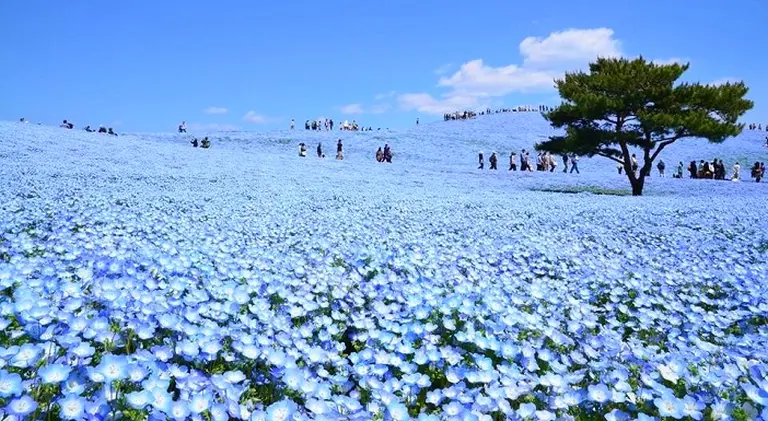
Ibaraki may not be as widely known as Tokyo or Kyoto, but it offers a diverse range of attractions that combine history, culture, and nature in a refreshing way. From sacred shrines and towering statues to endless flower gardens and seasonal landscapes, each stop in this prefecture provides visitors with a different perspective on Japan’s beauty. Whether you are drawn by its spiritual sites, fascinated by its cultural heritage, or simply looking to enjoy the charm of seasonal blossoms, Ibaraki presents a journey that can be as relaxing or as enriching as you wish.



